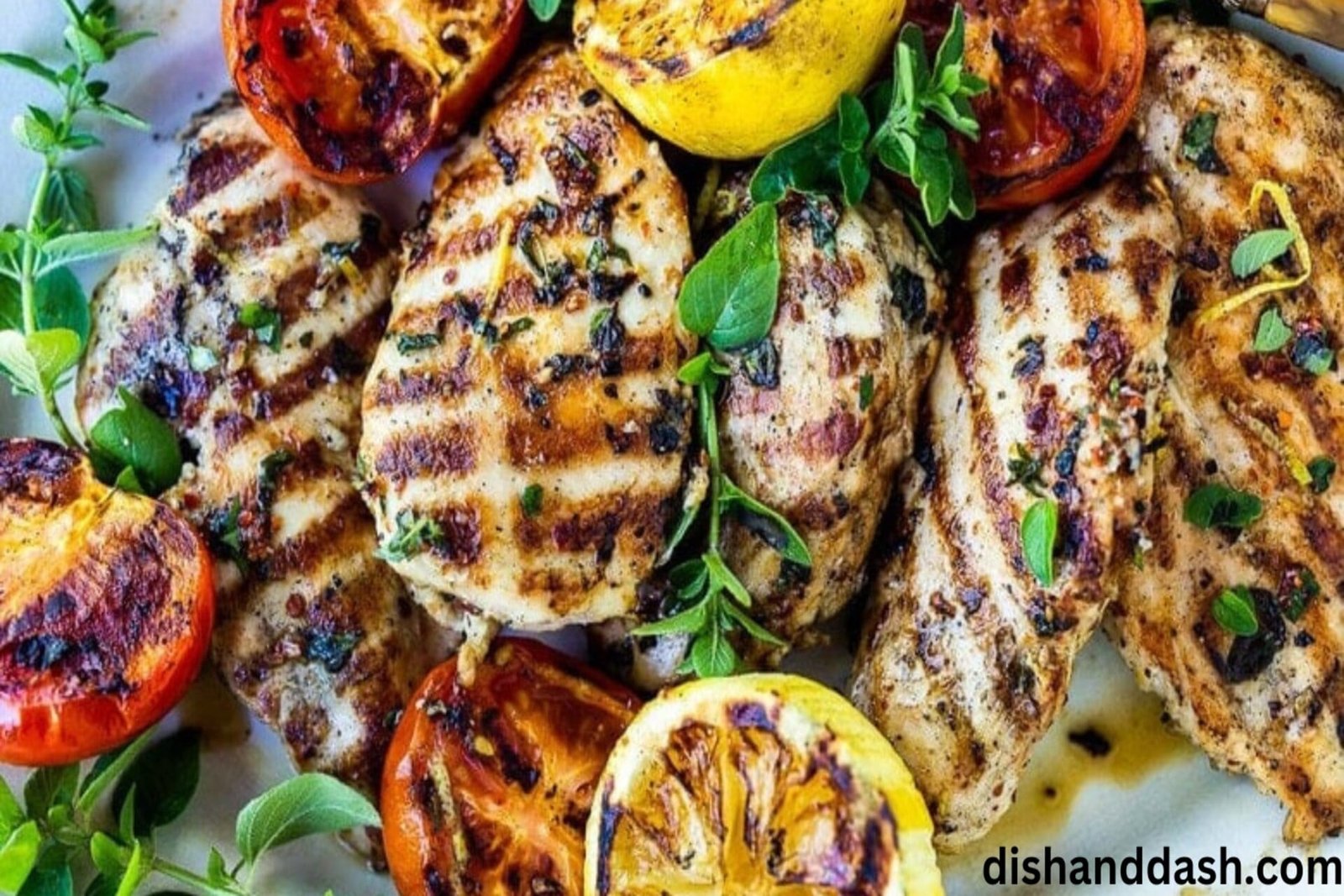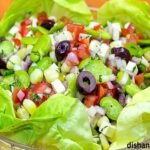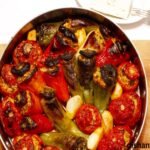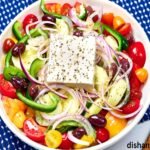Recipes concerning grilled chicken can both be an art and a science. For any user, new or professional, having skills to grill chicken to juicy perfection is one good skill that you should learn. Well, that must be one of the most popular questions among people nowadays Here’s everything you need to know about grilling chicken. Ready to fire up the grill? Let’s get started!
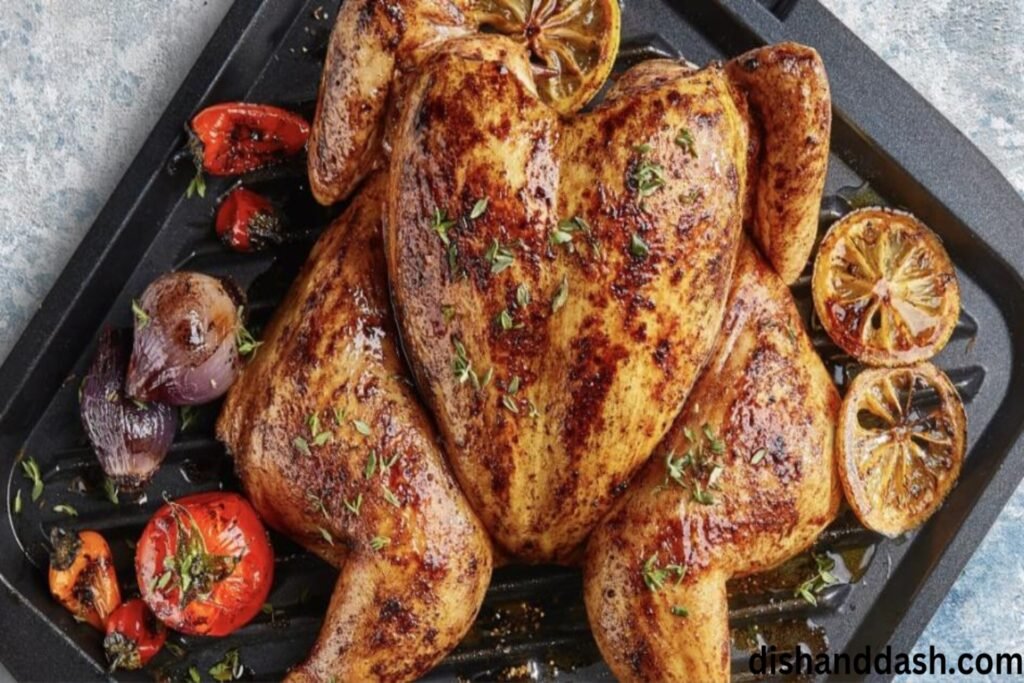
Table of Contents
Why Grilled Chicken?
Grilled chicken is preferred by many for very many reasons including the following. It’s good for you, can be used in so many ways, and when prepared correctly, it is moist and delicious. Cooking also involves the social benefits of barbecuing that other techniques are pulled short of offering. Also, it is great for simple weekday meals and different summer grilling for grilled chicken.
1. Choosing the Right Chicken
Several choices of chicken that a person can make before grilling are vital determinants of the food’s outcome. Here are some popular choices, each with its benefits:
a) Chicken Breasts
Chicken breasts are also considered to be juvenile meat which means they are part of the health-conscious diet. Though, they could easily dry on the grill if not treated differently. Many restaurants use boneless skinless chicken for grilled chicken breasts but they require close attention because they contain very little fat.
b) Chicken Thighs
This dish will be more sumptuous if you use chicken thighs instead of chicken breast. When it comes to Thighs, bone-in and skin-on cuts have more fluid retaining capacity and give a better taste. Not to mention, with a good sear, tomatoes are far more forgiving than most counterparts when cooked on high heat, a bonus for grill masters.
c) Chicken Drumsticks and Wings
Drumsticks and wings are ideal and popular for any informal event. The food is cheap, takes quite a short time in preparation, and can be handled with one’s hand. These cuts are ideal for marinating, and they soak up the marinades or other forms of toppings well.
2. Essential Equipment for Grilling
If you are looking forward to grilled chicken, you will need some important accessories to make the work easier. Here’s a checklist of equipment you’ll need:
a) Grill
As for the type of grill, it is important to say that both – a gas and a charcoal one – are suitable. Charcoal grill gives food a smoky flavor while on the other hand, gas grills are common and predictable.
b) Meat Thermometer
Using a meat thermometer is very important when using grilling when preparing chicken. It guarantees that your chicken has been well cooked attaining a safe internal temperature of, 165°F(75°C).
c) Tongs
Tongs are useful in turning the chicken without tearing it which assures that the juices do not spill.
d) Grill Brush
Cleaning a grill is essential for grilled chicken needs because; it prevents the chicken from sticking on the grill surface and helps in charring uniformly. Clean often with a grill brush before and after use to remove deposits on the grill surface.
e) Marinade Brush (Optional)
If you are likely to use the marinade to baste the chicken while grilling then you need a marinade brush.
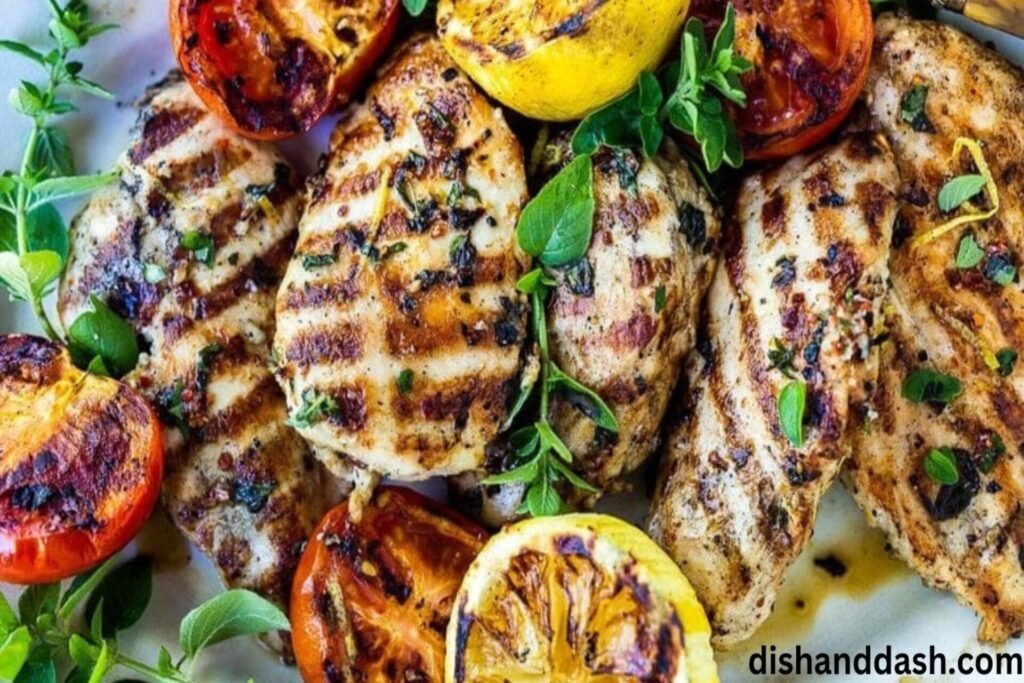
3. Prepping Your Chicken
a) Seasoning or Marinating?
To season the chicken, that is, add flavors to the chicken, there are two main methods: seasoning and marinating. Here’s what you need to know:
- Dry Rubs: In a fast-forward, the fastest way to season it would be by dashing salt, pepper, Nutmeg, and garlic powder. It is used as a marinade, the secret being to massage it into the meat at least half an hour before barbecuing.
- Marinades: If it can be done, it is always recommended that chicken be marinated because it improves the taste and texture. A basic marinade would be olive oil, lemon juice, minced garlic, and a choice of herbs and spices. Marinating is most effective in the case where the chicken is left to marinate for not less than 2-4 hours or even more preferably overnight.
b) Patting Dry
For grilled chicken, you will need to remember to dry the chicken using paper towels. This eliminates the formation of steam on the chicken; a factor that would otherwise deny it a crispy sear.
c) Resting the Chicken
Let the chicken sit at the counter for approximately 15–20 minutes before you grill it. This is meant to ensure that the food is well-cooked.
4. Grilling Techniques
a) Grilling Times and Temperatures
| Cut | Grill Time | Internal Temp |
|---|---|---|
| Chicken Breasts | 6–8 minutes per side | 165°F (75°C) |
| Chicken Thighs | 8–10 minutes per side | 165°F (75°C) |
| Chicken Drumsticks | 12–15 minutes per side | 165°F (75°C) |
| Chicken Wings | 8–10 minutes per side | 165°F (75°C) |
b) Two-Zone Cooking
For thick stations of chicken, you should employ the two-zone cooking method. This means developing one half of the grill for high heat for browning, while the other part should be low heat to allow slow cooking.
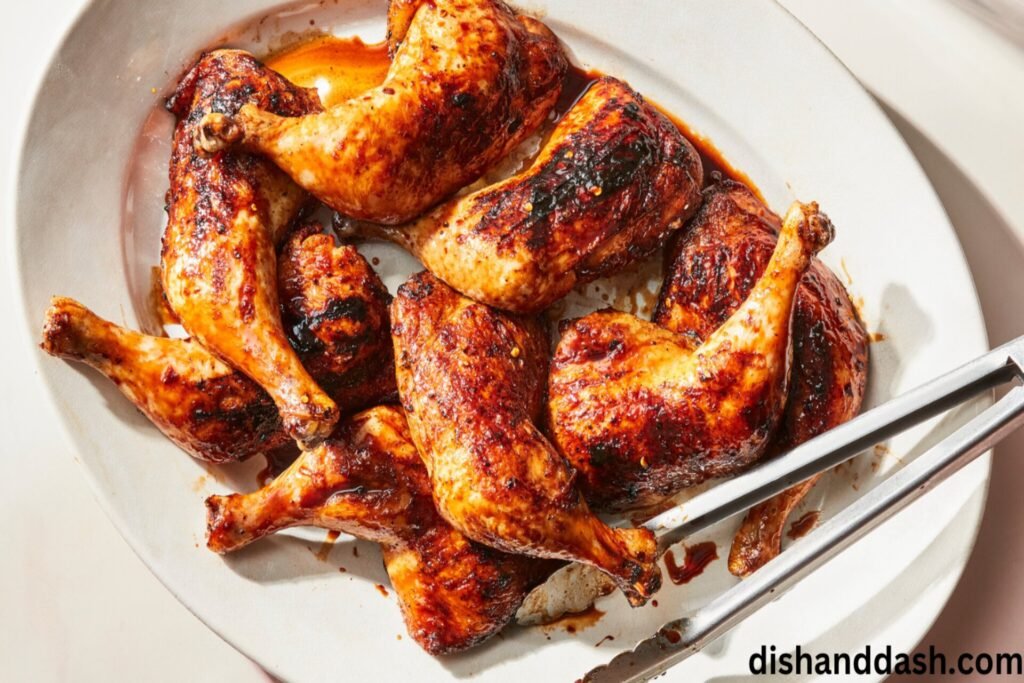
c) Avoiding Flare-Ups
To avoid flare-ups due to dripping fats, monitor your grilling process and use minimum direct heat at some other times. You also bring the chicken closer to or farther away from the heat to prevent it from burning.
d) Basting While Grilling
If you want to brush your chicken with marinade or barbecue sauce, then do it on the last five to ten minutes of grilling. This helps so that the sugars in the sauce do not burn.
5. Troubleshooting Common Mistakes
a) Dry Chicken
If your chicken usually comes out dry, then it is probably boiled for too long. Don’t let it get over the required internal temperature of 165°F (75°C) by using a meat thermometer.
b) Chicken Sticking to the Grill
If your chicken is sticking to the grill it may be that your grill was not hot enough when the chicken was first put on it. Ensure that your grill is ready and hot before placing the chicken and make sure that the grates are oiled.
c) Uneven Cooking
This is always accompanied by variations in heat which fluctuates between too low and too high temperatures. Indirect cooking should be used on the two-zone method for the thicker part of the chicken while areas with less fat should be cooked directly.
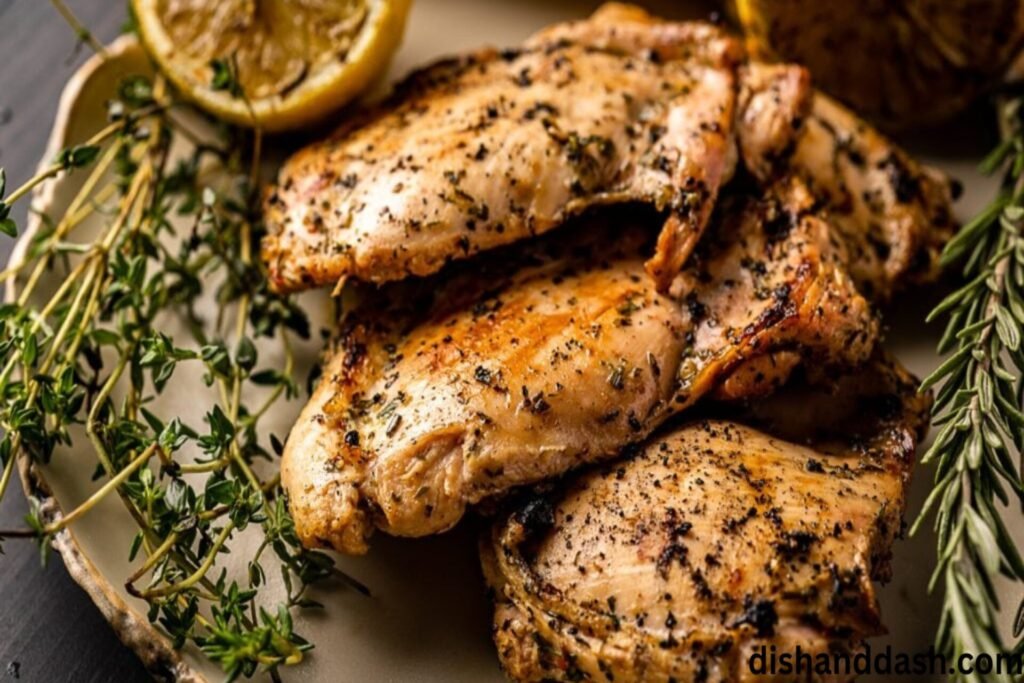
FAQs
1. What is the best way to keep grilled chicken juicy?
Marinating your chicken before grilling and using a meat thermometer to avoid overcooking are two of the best ways to ensure juicy chicken. Letting the chicken rest after grilling also helps the juices redistribute throughout the meat.
2. Can I grill frozen chicken?
It’s best to thaw chicken before grilling. Grilling frozen chicken can result in uneven cooking, with the outside burning while the inside remains raw. Always thaw your chicken completely in the refrigerator before grilling.
3. How long should I marinate chicken?
For most marinades, 2–4 hours is sufficient to infuse flavor into the chicken. However, for a more intense flavor, marinate overnight. Be cautious with acidic marinades (e.g., lemon juice or vinegar), as they can break down the meat and make it mushy if left too long.
4. What temperature should my grill be for chicken?
For direct grilling, preheat your grill to medium-high heat (around 400°F/200°C). For indirect grilling, you can aim for 300°F (150°C) to allow for slower, even cooking.
5. How do I prevent chicken from burning?
Avoid using sugary marinades at the beginning of grilling, as they can burn quickly. Instead, brush sauces on during the last 5–10 minutes of cooking. Also, use indirect heat for thicker cuts to prevent charring the outside before the inside is cooked.
